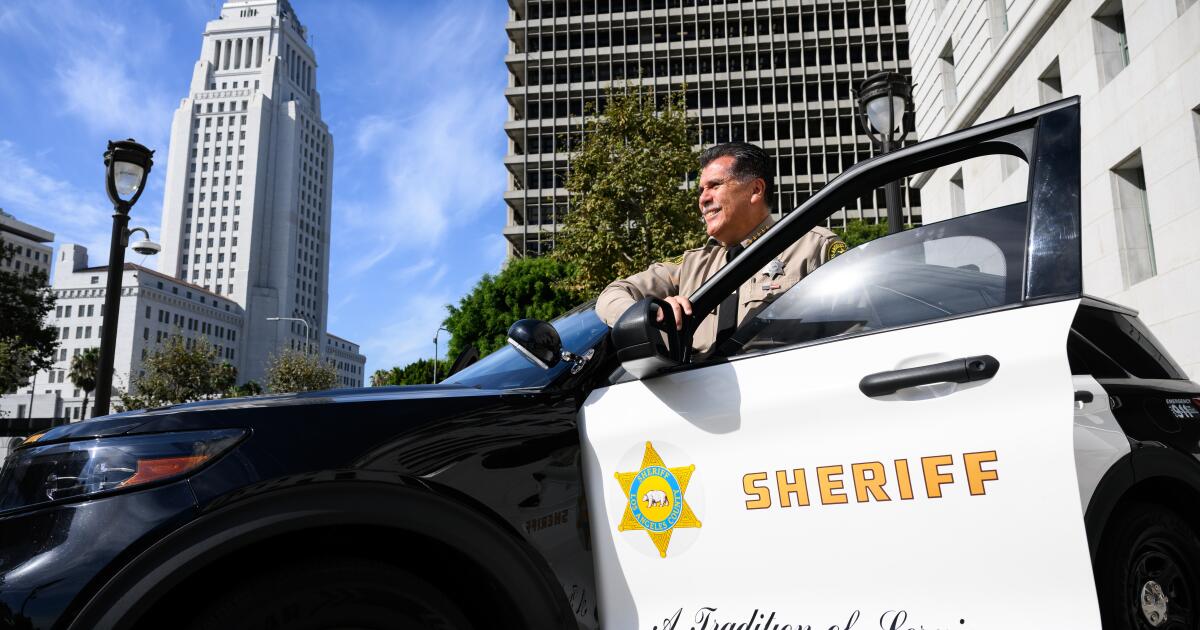Los Angeles County Sheriff Robert Luna announced the rollout of about 280 new patrol vehicles for the department Thursday, upgrading an aging fleet of “black and white” patrol vehicles, many of which are more than eight years old and have been driven more than 100,000 miles.
At a news conference at the Hall of Justice in downtown L.A., Luna said the aim is to eventually phase out the department’s older vehicles, enhancing the safety of deputies and community members while reducing impacts on the environment and spending on maintenance and repairs.
Luna has made modernizing the fleet a priority. More than 1,100 of the department’s nearly 2,000 vehicles have been on the road for eight years or more, including around 700 that have surpassed the 100,000-mile mark.
The interior of a new patrol car is displayed during a press conference Thursday.
(William Liang/For The Times)
“Our black and white patrol vehicles are the backbone of our day-to-day patrol law enforcement functions here in our county,” he said. “These vehicles are on the road consistently 24 hours a day, seven days a week; they’re passed from one shift to the next and often pushed to their operational limits.”
Between January and July, the department responded to more than 434,000 calls for service. Upgrading the vehicles deputies drive to respond to those calls will help avoid breakdowns and delays while protecting deputies and other motorists, Luna said.
“With a fleet this large and active,” he added, “vehicle age and mileage becomes a serious concern for all of us, not just for maintenance and budget reasons, but for public safety and the safety of our deputies and operational efficiency.”
Of the 280 new vehicles, 48 are hybrid gasoline-electric, which will “lower fuel consumption, reduce emissions and support our county’s broader sustainability goals.”
The new rides feature collision avoidance systems, “advanced LED lighting” on running boards and elsewhere to help people see the vehicles, and enhanced sirens that use low frequencies that allow other drivers to more easily detect them, the sheriff said.
“The goal here is simple,” Luna added. “Better visibility makes quicker, safer passage through traffic, which translates to faster response times and fewer collisions.”
